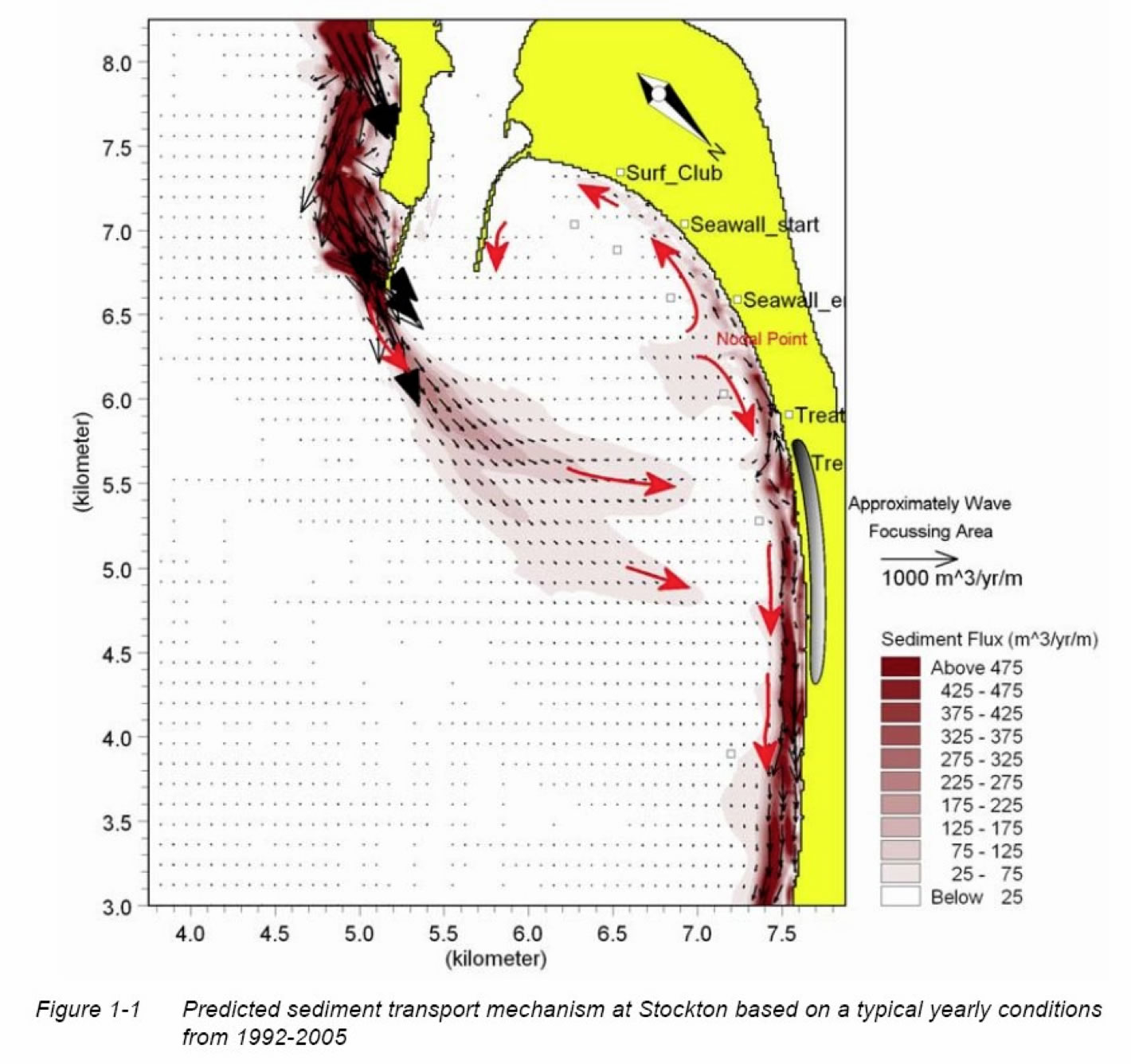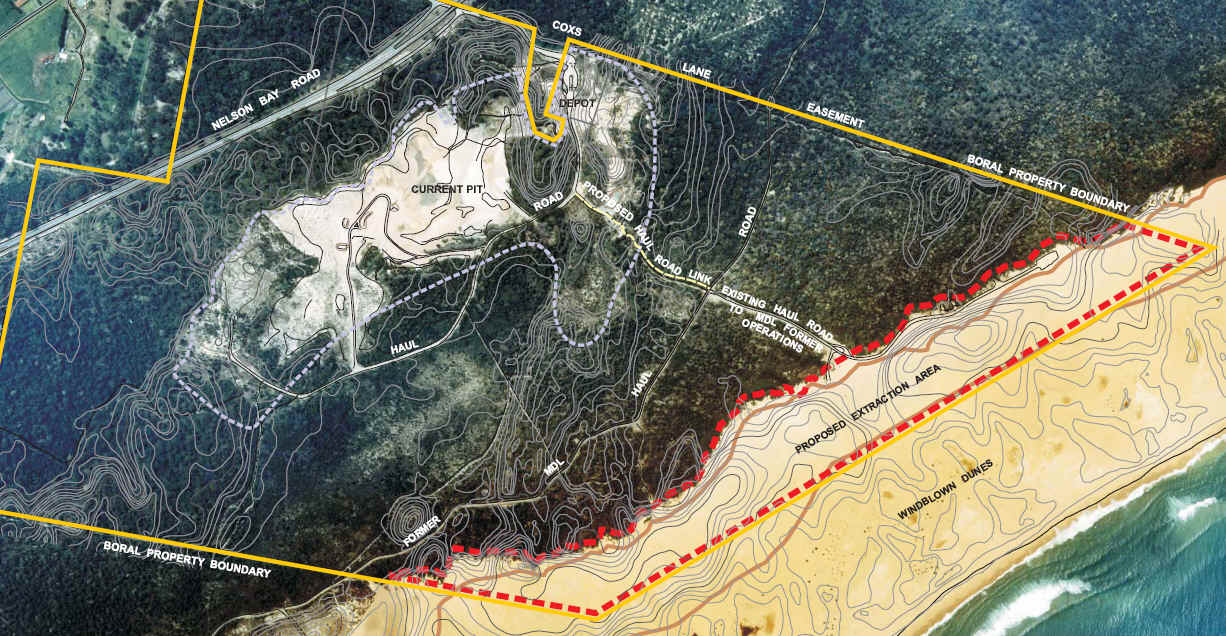
4.0 Human Impacts on Coastal Sand Dune Ecosystems
As mentioned in the previous chapter, humans have been responsible for changing the lithosphere and biosphere on Coastal Sand Dunes. The Stockton Bight Coastal Sand Dunes are no exception and humans have had both positive and negative impacts upon them.
1. Positive Impacts
a) Aboriginals, fire and the Encouragement of Biodiversity
The most positive human impact that has been made on the Stockton Bight Coastal Sand Dunes was by the Aboriginal people, particularly the Worimi Nation. The Worimipeople, through a practice called "fire stick farming", have actively encouraged vegetation growth.
As explained earlier, vegetation plays two important roles on Coastal Sand Dunes. Firstly, it helps stabilise dunes by trapping and stabilising the sand particles. Secondly, the secondary and tertiary vegetation zones often develop into thick forests, woodlands. wetlands and heaths which provide a habitat for many other flora and fauna species to thrive.
Some of the main vegetation species found at Stockton Bight -such as Banksias, Wattles, and Eucalypts- depend on fire for the propagation of their seeds and for the development of new growth.
By deliberately lighting fires, the indigenous peoples have contributed the growth of the thick forests and woodlands that were found in the secondary and tertiary vegetation zones. By providing an extensive habitat many other animal species have been able to thrive, thus making the local Aboriginal people partially responsible for the biodiversity along Stockton Bight.>
b)European Management
It has only been in very recent years that the Europeans have started to make positive impacts on the Coastal Sand Dunes at Stockton Bight. Unfortunately, the positive steps have been in response to the negative impacts that are outlined below. In recent years, European mangers have started to eradicate the introduced species such as Bitou Bush, reduce access to certain parts of the Dunes, restabilise the foredune , and conserve and protect threatened species etc. Many of these will be covered in more detail in the next chapter in contemporary management strategies.
2. Negative Impacts
Humans have adversely affected the Coastal Dunes at Stockton Bight particularly on the biophysical processes occurring in the accretion cycle, and on the flora and fauna in the biosphere.
These impacts have been caused by the following human activities:
- Disruption of Sediment (sand) Flow
- Coastal Development
- Recreation use
- Cattle Grazing
- Introduction of weeds and pests
- and Sand mining
The above human activities are a serious concern on the Stockton Bight, and are the main reasons why the Coastal Sand Dunes are considered an Ecosystem at Risk.>
In terms of the lithosphere, the accretion cycle has been adversely affected Dune vegetation has low elasticity (takes longer to recover). Most of the coast has already lost some of its intrinsic value, which may be costly and difficult to rehabilitate. Specific human impacts are examined below.
Disruption of Sediment Flow- Building of the Sea Wall
The accretion cycle is dependant on the flow of sediment along the coast. When humans alter the flows of sediment major changes take place in the coastal environment. If the flow of sediment is reduced or cut completely the consequences for dunes are immediate and direct as the outputs in the accretion cycle will outweigh the inputs.
At the southern end of the Stockton Bight , the building of the the large sea walls at the mouth of the Hunter River has had catastrophic effects on the sediment flow and depositing of sand along the beach around Stockton township. The sediment provided by longshore drift is not getting to the beach and dunes in that area. As a consequence the foredune area is receding back.

One major function that the foredune plays is to act as a storm buffer. The built environment in this area, especially the Stockton Caravan Park and Surf Club, are in danger of being claimed by the sea as each big storm brings with it destructive waves that erode the foredune area but the flow of sediment to replenish it has been altered by the sea wall. Costly rectification work is currently in place.
Coastal development
Coastal Dunes are located along an area that is desirable for human habitation as its intrinsic value has made it a popular place for where people want to live. Since demand for land and housing near coasts are high, coastal dunes have high economic worth (utility value). Thus, humans build large housing developments on Coastal Dunes.
In the Stockton Bight area intensive housing development has taken place. Firstly, the Stockton township was built on the hind dune area and has completely transformed it into an urban area.
In very recent years, developers are starting to build housing estates further north. Fern Bay is a recent housing development and by its own Species Impact Statement has found that there are a number of significant impacts that will take place on the biosphere.
...The site is also part of a local corridor of native vegetation and contains key habitats for threatened species in the region. Accordingly potential impacts on flora and fauna must be considered in this assessment...The site contains swamp forest, dry sclerophyll open forest and wet heath that supports habitat for a range of threatened species and ecological communities listed in the Threatened Species Conservation Act 1995 (TSC Act). The site forms part of a larger fragment of coastal woodland in the Fern Bay area and adjoins the floodplain of Fullerton Cove wetlands (a SEPP 14 wetland) and conserved within the Kooragang Nature Reserve.
Thesite comprises three distinct vegetation communities including:-
- Coastal sand apple Blackbutt forest
- Swamp mahogany – paper bark forest
- Wet heath – Tomago sand swamp woodland.
No threatened populations currently listed under the TSC Act and the Environmental Protection and Biodiversity Conservation Act 1999 (EPBC Act) have been recorded on the site. One Endangered Ecological Community (EEC), being the ‘Swamp Sclerophyll Forest on coastal floodplains of the NSW north coast, Sydney basin and south east corner bioregions’, is located in the swamp forest adjoining Nelson Bay Road. There are 41 threatened species listed under TSC Act that have the potential to occur within 10km radius of the site. A total of 37 threatened species and one endangered ecological community have the potential to be impacted by the proposal based on habitat requirements and previous studies on the site. Of these species, there were 12 species which have recently been recorded on the site which included:-
- Newcastle Double tail orchid (Diuris praecox)
- Wallum froglet (Crinia tinnula)
- Hoary wattled bat (Chalinolobus nigrogriseus)
- Eastern Freetail-bat (Mormopterus norfolkensis)
- Greater broad-nosed bat (Scoteanax rueppellii)
- Little bentwing-bat (Miniopterus australis);
- Eastern bentwing-bat (Miniopterus schreibersii oceanensis)
- Yellow-bellied sheattail-bat (Saccolaimus flaviventris)
- Grey-headed flying-fox (Pteropus poliocephalus)
- Powerful owl (Ninox strenua)
- Masked owl (Tyto novaehollandiae)
- Squirrel glider (Petaurus norfolcensis)
The development proposes to clear 70.2 hectares of vegetation, which includes 495 habitat trees. This clearing comprises 9.7ha of swamp forest, 15ha of wet heath and 45.5ha of dry open forest from the site. The following potential impacts of the proposal were identified by the applicant in the Species Impact Statement (SIS):-
- Habitat loss
- Habitat fragmentation
- Local and regional connectivity
- Hydrology and water quality
- Road traffic
- Rubbish dumping
- Fire frequency
- Noise
- Predation by feral animals
- Weed dispersal
Of these potential impacts, the greatest impacts include habitat loss, habitat fragmentation and the potential impact on the local and regional corridor.
Source: Extract from NSW Department of Planning (2006) MASTER PLAN ASSESSMENT: Fern Bay Estate No 85 Nelson Bay Road Fern BayPort Stephens Local Government Area pp.38-39
Recreational Uses
People visiting beaches have a major impact on dune ecosystems. What Research demonstrates that coastal areas that have high rates of visitor pressure will be subject to significant degradation. One of the most common reasons for this is the overall loss of plant life.
As people try to make their way to the beach they trample plants. As `holes' appear in the dune vegetation, introduced weeds are given a chance to grow. These tend to be more resilient and can better cope with trampling. The foredune vegetation, in particular the grasses, are the most easily damaged. These are also some of the most important species because they protect the least stable part of the dune system.
The tyres of four-wheel drive vehicles and the hooves of horses and camels also destroy dune vegetation and their weight leads to greater soil compaction. Compact soil has less oxygen, which reduces plant growth and makes it even more difficult for plants to recover. On some beaches where vehicles have been banned, the effects of their use can still be seen up to 10 years later.
Dune systems have also been flattened to provide land for sporting facilities, parking areas and parkland.
Sand mining and Extraction
Sand mining is one of the most disruptive and controversial of land uses carried out in the coastal environment because it involves the total removal of dune vegetation. When mining takes place in dune systems supporting climax (a well balanced) plant communities, the process of rehabilitation can take decades and may never achieve the ecological diversity of the dunes before the mining as the elasticity of dune vegetation is low.
Dunes are mined for silica, and minerals that help in the production of titanium. Furthermore, Sand is actually removed for construction and replenishment in other beaches (Beaches in Hawaii have Stockton Sand on them).
The method of Sand mining is also very destructive to the lithosphere and vegetation communities. Sand mining is normally carried out by dredging sand and separating heavy minerals from the silica on board a floating concentrator plant in a dredge pond. The dredge and other equipment move along a predetermined path about 100 m wide. The path is cleared of vegetation about a month prior to mining, the vegetation burnt and the topsoil stockpiled. The path is cleared 100 m in front of the dredge pond.
After an area is mined, rehabilitation begins along the dredge path. Tailings (leftovers) are reshaped and stabilised to resemble existing landforms, and are revegetated to resemble existing plant communities.
Sand extraction for commercial purposes is also very disruptive. Sand is used in a range of industrial and construction processes. The impact tends to be greatest in dune systems adjacent to large urban centres.
At Stockton Bight both these types of sand mining operations are occurring.

Introduced Species and Weeds: Rabbits and Bitou Bush
Coastal dunes are fragile ecosystems. To survive in such harsh conditions, plants must be able to tolerate poor soils, strong winds and salt spray. Given such conditions, it is not surprising that dune ecosystems are dominated by highly specialised plant species. However, like most highly specialised species, dune vegetation is vulnerable to changes in its environment, including invasion by weeds.
Most infestations are the product of human activities in the coastal zone. In some cases, plant species, which later become weeds, have been introduced deliberately to stabilise dunes. Bitou Bush is an example of this (click this hyperlink to find out more about bitou bush) In other instances, weeds are introduced via the wheels of off road vehicles, the soles of shoes and the faeces of cattle and birds. Eradicating weeds is often very labour intensive (and therefore expensive) and exposes the disturbed areas to wind erosion.
Rabbits are one of the most destructive species ever introduced to Australia. They have spread out across the continent, causing significant damage in many different environments. In the coastal dunes they eat the grasses and other vegetation, reducing the ground cover and exposing sand to wind erosion. The burrows also destabilise the dune structure.